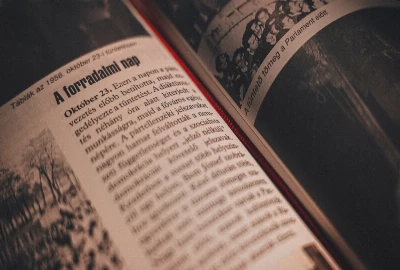Fan Edits & Alt-Endings: The Rise of DIY Storytelling

For decades, audiences consumed stories in a one-way stream—creators made content, and fans absorbed it. But today, the power dynamic has shifted. Thanks to digital editing tools, social platforms, and passionate online communities, audiences are no longer just passive consumers. They are creators, remixers, and editors in their own right. This new era of DIY storytelling is redefining how narratives live and evolve, long after official versions hit the screen.
From alternate endings that rewrite disappointing finales to fan edits that reshape blockbuster films, fans now have the tools to create new versions of beloved stories. What was once a niche hobby has exploded into a cultural movement, raising questions about authorship, ownership, and the future of storytelling itself.
The Origins of DIY Storytelling in Fandom

From Fanzines to Fanfiction
DIY storytelling didn’t begin with YouTube or TikTok. Long before digital platforms, fans expressed their creativity through fanzines and fanfiction. These grassroots efforts allowed communities to explore “what if” scenarios that the original creators never addressed.
Early Video Editing and Mashups
As home editing software became accessible in the early 2000s, fans began experimenting with re-cut trailers and parody mashups. Projects like the Phantom Edit (a fan re-cut of Star Wars: The Phantom Menace) gained notoriety for showcasing how editing alone could transform a story.
The Digital Democratization of Storytelling
Today, anyone with a laptop or even a smartphone can create polished fan edits. Platforms like TikTok, YouTube, and Reddit provide instant distribution, making DIY storytelling a global phenomenon rather than a subcultural niche.
The Appeal of Fan Edits and Alternate Endings

Correcting "Bad" Storytelling
Many fan edits emerge as responses to dissatisfaction. Whether it’s a rushed season finale (Game of Thrones) or a divisive movie ending (Star Wars: The Rise of Skywalker), fans step in to “fix” what the official storytellers couldn’t—or wouldn’t.
The Desire for Agency
Audiences crave agency in worlds they love. Fan edits and alternate endings give them control, allowing them to reshape narratives according to personal or collective vision. In this sense, DIY storytelling is a form of cultural empowerment.
Community Validation and Belonging
Creating and sharing fan edits isn’t just about storytelling—it’s about belonging. These works foster community discussion, gain millions of views, and validate the idea that audiences are co-creators, not just spectators.
Platforms Powering the DIY Storytelling Boom

YouTube as the Fan Edit Hub
YouTube remains the primary home for fan edits. From full-length movie re-cuts to clever alternate trailers, creators use the platform to reach massive audiences. Some fan edits garner millions of views, rivaling professional productions.
TikTok and Short-Form Storytelling
TikTok has revolutionized fan creativity by condensing narratives into bite-sized edits. Users remix iconic scenes, overlay alternate dialogue, or create entirely new “mini-endings” that thrive on virality.
Reddit and Online Communities
Subreddits dedicated to fanfiction, alternate endings, and editing tips act as incubators for DIY storytelling. These spaces offer feedback, collaboration, and platforms for projects that push creative boundaries.
The Impact of Fan Edits on Pop Culture

Shaping Audience Expectations
DIY storytelling has raised the bar for official storytellers. Audiences now know that alternate versions are possible and often judge official releases against fan-made alternatives.
Fan Influence on Studios
Studios are paying attention. The most famous example is Zack Snyder’s Justice League, a fan-driven campaign that pressured Warner Bros. to release an alternate cut of the film. This success proved that audience demand, amplified by DIY storytelling culture, could reshape corporate decisions.
Expanding Canon vs. Fanon
Fan edits often create “fanon”—a body of fan-accepted truths or endings that rival official canon. This blurs the line between official storytelling and community-created versions, challenging the idea of who gets to define a story’s “true” ending.
The Legal and Ethical Debates

Copyright vs. Creativity
Fan edits occupy a legal gray area. On one hand, they’re transformative works of art; on the other, they use copyrighted material without permission. Studios sometimes crack down, while others tolerate or even embrace these fan contributions.
Ownership of Stories
At the heart of DIY storytelling is a question of ownership: do stories belong solely to their creators, or to the audiences who bring them to life in culture? The tension between intellectual property law and cultural participation continues to grow.
When Fans Cross Boundaries
Not all fan edits are celebrated. Some alter stories in ways that contradict the original’s intent or spread harmful interpretations. These instances spark debates about responsibility and ethical limits in DIY storytelling.
The Future of DIY Storytelling

Technology as an Enabler
With AI-assisted editing, deepfake technology, and advanced editing software becoming more user-friendly, the future of fan edits will only grow more sophisticated. Soon, fans may not just rewrite endings—they could generate entirely new episodes or films.
Hybrid Storytelling Models
Some creators may embrace DIY storytelling directly, releasing editable assets or encouraging fan remixes as part of their marketing strategy. This could blur the line between professional and amateur even further.
Redefining Authorship in the Digital Age
As DIY storytelling expands, our understanding of authorship will evolve. Stories may no longer belong to one creator or studio but instead exist as collaborative, ever-evolving cultural artifacts shaped by both professionals and fans.




